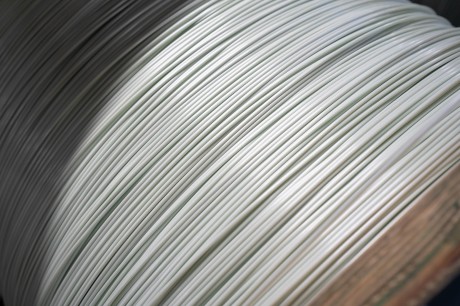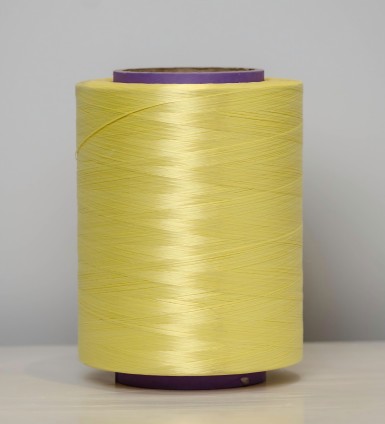1. Steel wire
In order to ensure that the cable can withstand enough axial tension when laying and applying, the cable must contain elements that can bear the load, metal, non-metal, in the use of high-strength steel wire as a strengthening part, so that the cable has excellent side pressure resistance, impact resistance, steel wire is also used for the cable between the inner sheath and the outer sheath for armor. According to its carbon content can be divided into high carbon steel wire and low carbon steel wire.
(1) High carbon steel wire
High carbon steel wire steel should meet the technical requirements of GB699 high-quality carbon steel, the content of sulfur and phosphorus is about 0.03%, according to the different surface treatment can be divided into galvanized steel wire and phosphating steel wire. Galvanized steel wire requires the zinc layer to be uniform, smooth, firmly attached, the surface of the steel wire should be clean, no oil, no water, no stains; The phosphating layer of the phosphating wire should be uniform and bright, and the surface of the wire should be free from oil, water, rust spots and bruises. Because the amount of hydrogen evolution is small, the application of phosphating steel wire is more common now.
(2) Low carbon steel wire
Low carbon steel wire is generally used for armored cable, the surface of the steel wire should be plated with a uniform and continuous zinc layer, the zinc layer should not have cracks, markings, after winding test, there should be no bare fingers can erase the cracking, lamination and fall off.
2. Steel strand
With the development of the cable to the large core number, the weight of the cable increases, and the tension that the reinforcement needs to bear also increases. In order to improve the capacity of the optical cable to bear the load and resist the axial stress that may be generated in the laying and application of the optical cable, the steel strand as the strengthening part of the optical cable is the most suitable, and has a certain flexibility. Steel strand is made of multiple strands of steel wire twisting, according to the section structure can be generally divided into 1× 3,1 × 7,1 ×19 three kinds. Cable reinforcement usually uses 1×7 steel strand, steel strand according to the nominal tensile strength is divided into: 175, 1270, 1370, 1470 and 1570MPa five grades, the elastic modulus of the steel strand should be greater than 180GPa. The steel used for steel strand should meet the requirements of GB699 “Technical Conditions for high-quality carbon steel structure”, and the surface of the galvanized steel wire used for steel strand should be plated with a uniform and continuous layer of zinc, and there should be no spots, cracks and places without zinc plating. The diameter and lay distance of the strand wire are uniform, and should not be loose after cutting, and the steel wire of the strand wire should be closely combined, without crisscross, fracture and bending.
3.FRP
FRP is the abbreviation of the first letter of the English fiber reinforced plastic, which is a non-metallic material with a smooth surface and uniform outer diameter obtained by coating the surface of multiple strands of glass fiber with light curing resin, and plays a strengthening role in optical cable. Since FRP is a non-metallic material, it has the following advantages compared with metal reinforcement: (1) Non-metallic materials are not sensitive to electric shock, and optical cable is suitable for lightning areas; (2)FRP does not produce electrochemical reaction with moisture, does not produce harmful gases and other elements, and is suitable for rainy, hot and humid climate environment areas; (3) does not generate induction current, can be set up on the high-voltage line; (4)FRP has the characteristics of light weight, which can significantly reduce the weight of the cable. The FRP surface should be smooth, the non-roundness should be small, the diameter should be uniform, and there should be no joint in the standard disc length.
4. Aramid
Aramid (polyp-benzoyl amide fiber) is a kind of special fiber with high strength and high modulus. It is made from p-aminobenzoic acid as monomer, in the presence of catalyst, in the NMP-LiCl system, by solution condensation polymerization, and then by wet spinning and high tension heat treatment. At present, the products used are mainly the product model KEVLAR49 produced by DuPont in the United States and the product model Twaron produced by Akzonobel in the Netherlands. Because of its excellent high temperature resistance and thermal oxidation resistance, it is used in the manufacture of all-medium self-supporting (ADSS) optical cable reinforcement.
5. Glass fiber yarn
Glass fiber yarn is a non-metallic material commonly used in optical cable reinforcement, which is made of multiple strands of glass fiber. It has excellent insulation and corrosion resistance, as well as high tensile strength and low ductility, making it ideal for non-metallic reinforcement in optical cables. Compared to metal materials, glass fiber yarn is lighter and does not generate induced current, so it is particularly suitable for high-voltage lines and optical cable applications in wet environments. In addition, the glass fiber yarn shows good wear resistance and weather resistance in use, ensuring the long-term stability of the cable in a variety of environments.
Post time: Aug-26-2024



